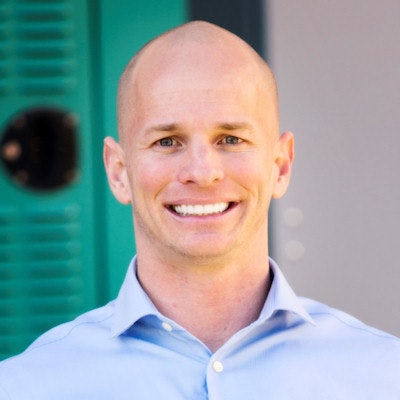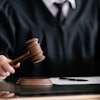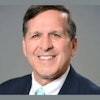
It's not news that the last year and a half has been, let's say, different. Stronger adjectives probably come to mind.
Around this time a year ago, most practices were still in the process of reopening, with all the new challenges that doing so presented. New safety protocols. Staff and patient attrition. An urgent need for revenue and collections. Changes in the way patients entered and exited the practice. Many more could be listed.
 Curtis Marshall.
Curtis Marshall.What stands out as you've had a chance to reflect on what happened in 2020 and what you learned? For many dental practice owners and teams, the first thing that may come to mind is "good riddance." But for some, surprisingly, last year was one of their best in terms of performance and profitability. How is that possible?
It turns out the top practices did (and are still doing) some things that made a bad year into one for the record books. The good news? Everything they did is something you can replicate in your practice.
Here are three things top-performing practices did in 2020 that had the most impact.
1. They focused on patient growth.
What was the first thing you thought when you read "patient growth"? Probably adding new patients, right? Most practices make adding new patients a priority, and understandably so. New patients are an important contributor to the growth of any dental practice.
But are new patients the best source of that growth? You might be surprised. In 2020, top-performing practices increased patient growth by 18%, which represented a 4% increase over 2019. In contrast, the lowest-performing practices were down almost 12% from 2019. What's going on here?
Two words: patient retention. The difference between the top and bottom practices in 2020 was how well they retained their existing patients. To repeat, new patients are important. But more importantly, successful practices focused on their existing patients in 2020. They made sure their patients had scheduled appointments, were current on hygiene care, and were being effectively presented with needed treatment (which was then scheduled and completed), in addition to ensuring their family members were also receiving care.
Here's the formula we use at Dental Intelligence to calculate patient growth: new patients + reactivated patients – patient attrition = patient growth.
For example, if you added 50 new patients, lost 40, and retained 10, you'll have positive patient growth. You can see the levers here and make decisions about which ones deserve your attention. Perhaps you would try to increase that new patient number to 60 or reduce that lost patient number to 30. Maybe your focus is on reactivating more patients.
Regardless of what you decide, it's important to know your current patient growth percentage and then develop and implement a plan to improve that number. That is how those practices saw growth in 2020, and it's how they (and you) will grow in 2021.
2. They held an effective morning huddle -- every morning.
Morning huddles are something everyone knows about, right? The idea certainly isn't new. Meeting as a team for a few minutes each day to coordinate schedules and patient visits is a standard practice for many dental groups.
Are these successful practices doing something different in their huddle? Here are three actions they take:
- They use data to determine what they discuss: This is different from just reviewing numbers. For these practices, holding a data-driven huddle means they are using their key performance indicators to understand what happened the day before, what is happening today, and what is scheduled to happen tomorrow. They also adapt to improve performance as needed.
- They involve every team member: Instead of having an office manager or doctor run the huddle, these practices ask team members to come prepared to contribute, which leads to a sense of ownership and accountability.
- They celebrate success and set goals to improve: This is a big one! Successful practices thrive because they have a positive culture of growth and validation for team members. This culture is built on celebrating success and holding each other accountable, which builds trust and confidence.
Here's how one of these practices -- Greenville Family Dentistry in Greenville, IL -- is making the most of its morning huddle.
"We try to make every huddle a celebration, even if we might have missed some of our goals from the day before," office manager Whitney Thornton shared. "Highlighting even small wins does so much to unify and energize our team."
3. They focused on hygiene reappointment percentage.
Hygiene reappointment percentage is the percentage of patients at the office for a hygiene visit who schedule a subsequent hygiene appointment before leaving the dental office.
In 2020, the most successful practices scheduled more than 90% of patients for their next hygiene appointment before those patients left the practice. In contrast, practices at the low end scheduled 56%, or just over half of their hygiene patients for their next appointment. This is obviously a significant gap, and it should motivate all practices to determine their current hygiene reappointment percentage and whether it needs attention.
Unless you've already been focusing on this, your current reappointment percentage might be discouraging. We advise against despairing too much; instead, we encourage you to view this as a huge growth opportunity. Improving your hygiene reappointment percentage is a relatively easy process.
Mostly this is about forming new habits around a consistent and practice-wide process that everyone follows. Simply put, make scheduling patients for their next appointment a standard operating procedure. Doing so will significantly affect your schedule and the health of your patients.
Even though 2021 is half over, there are still plenty of opportunities for motivated practices to implement these and other best practices going forward. If growth is a priority for your practice, consider how these suggestions could be used and develop a plan of action. It's not too late.
Curtis Marshall is the director of partner operations for Dental Intelligence. Dental Intelligence is committed to helping practices grow in ways that matter. Request a free demo and learn how better data = better dentistry.
The comments and observations expressed herein do not necessarily reflect the opinions of DrBicuspid.com, nor should they be construed as an endorsement or admonishment of any particular idea, vendor, or organization.



















